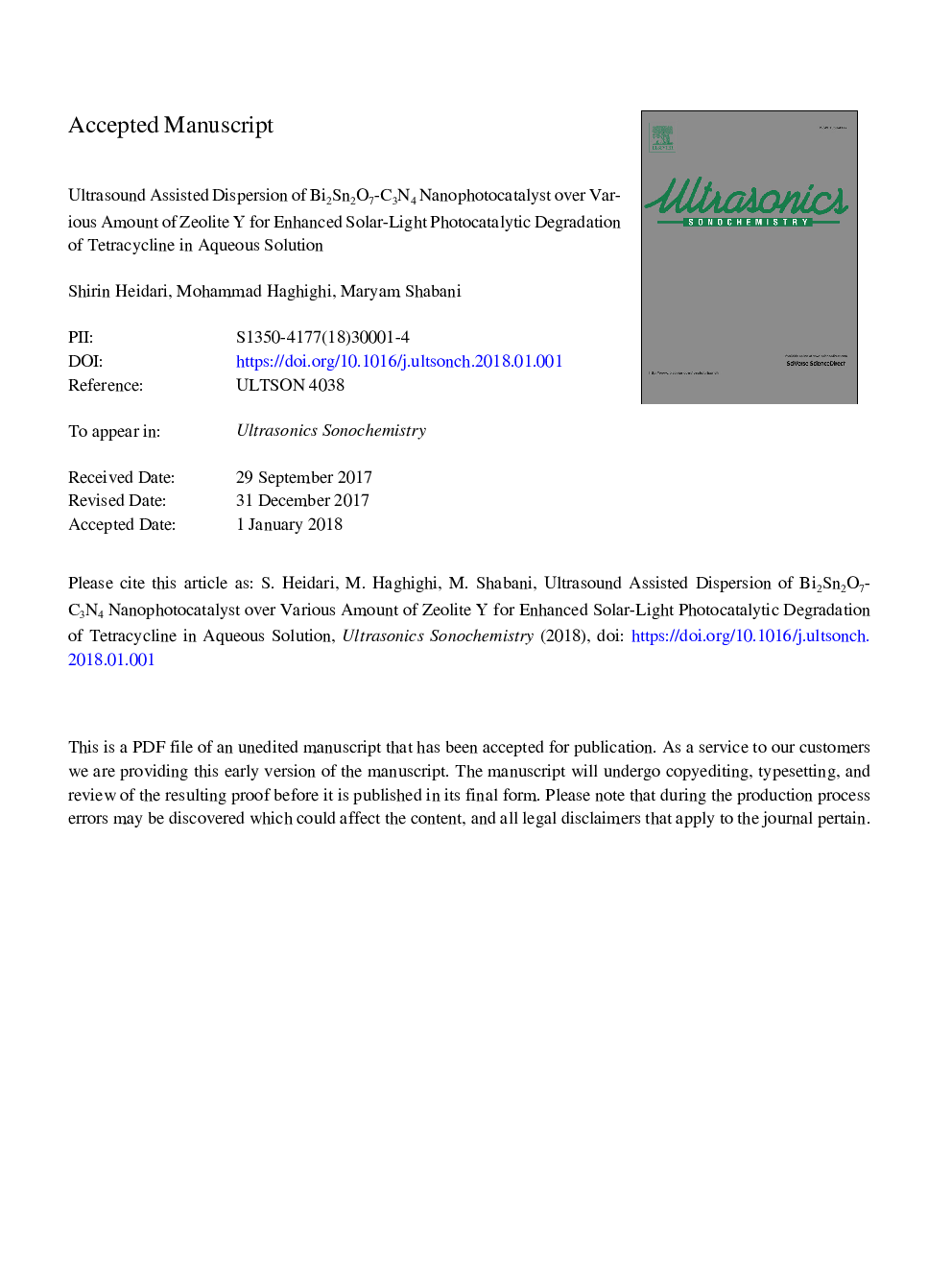| Article ID | Journal | Published Year | Pages | File Type |
|---|---|---|---|---|
| 7702919 | Ultrasonics Sonochemistry | 2018 | 48 Pages |
Abstract
Bi2Sn2O7-C3N4/Y nanophotocatalyst with various ratios of zeolite and high activity under simulated solar light irradiation were successfully synthesized using ultrasound-assisted dispersion method. The effect of different amounts of zeolite (10, 20 and 30â¯wt%) on the photocatalytic degradation of antibiotic tetracycline was investigated. The as-prepared nanophotocatalysts were characterized by XRD, FESEM, EDX, BET, FTIR, DRS and pHpzc techniques. The degradation results demonstrated that, Bi2Sn2O7-C3N4/Y(10) nanophotocatalyst with a degradation efficiency of about 80.4% is an optimum sample. This result can be attributed to the zeolite as a support that prevented the accumulation of Bi2Sn2O7-C3N4 active phase and increased access to active sites. Furthermore, it enhanced the adsorption capacity of tetracycline on the photocatalyst surface; that it is beneficial for tetracycline photocatalytic oxidation. Also the results of the DRS analysis indicated that the sharp absorption edge for optimum sample Bi2Sn2O7-C3N4/Y at about 480â¯nm and was active in the visible light range. Eventually, different operational parameters such as photocatalyst loading, concentrations of pollutant and pH solution were investigated. In addition, the degradation mechanism was suggested for TC removal.
Related Topics
Physical Sciences and Engineering
Chemistry
Chemistry (General)
Authors
Shirin Heidari, Mohammad Haghighi, Maryam Shabani,
